The flowering plant Asimina, or pau-pau, is a member of the Annonov family. This genus unites 8 species, in natural conditions such a plant is most common in the United States of America. It is also called American papaya (pau-pau), or a banana tree, the fact is that the fruits of all these plants are similar to each other. In order to obtain such fruits that can be eaten, gardeners cultivate triloba azimine ((Asimina triloba), or triloba azimine, and this species has been grown since 1736. This species is cultivated in warm regions, for example, in France, Spain , Italy and Japan. Also, such a culture can be found on the territory of Ukraine, mostly in its southern regions. In Russia, the azimine can be found mainly in the Stavropol and Krasnodar regions, and sometimes it grows very well and bears fruit in Orenburg. such a culture has tasty fruits, it also has healing properties.
Content
Features of azimina
Azimine triloba species is a deciduous tree that varies in height from 5 to 8 meters. The bark is smooth, brownish-gray in color. The wide-pyramidal crown is evenly leafy. Young shoots have pubescence. Leathery greenish leaf plates have an oblong-ovoid shape, they taper to a thick, short petiole, and sharpen towards the top, their length is from 22 to 25 centimeters, and their width is from 7 to 12 centimeters. The front surface of young leaves is shiny, and the back is pubescent. Flowering begins in April or May, beautiful bell-shaped flowers have a purple-brown color, they grow at the same time with the leaves in the leaf axils on last year's stems. The fruits are juicy cylindrical berries with curled tips, they ripen in the first half of the autumn period. The berries are collected in bunches of 2-9 pieces, their length varies from 7 to 9 centimeters, and their width is from 4 to 5 centimeters, and their weight is 60-200 grams. Dark green fruits, when ripe, become lighter and turn yellowish, and then their color changes to brown. The surface of the berries is covered with a thin shell, and inside they have a delicate orange, yellowish or creamy flesh, it has a sweet taste that at the same time resembles a banana and mango, while it smells like pineapple and strawberry. The pulp contains seeds, which are placed in 2 rows. One fruit contains from 10 to 12 dark brown seeds, squeezed from the sides, the length of which is 25 mm.
Growing azimines in the open field
Landing pawns in the ground
Azimina fruits ripen in at least 160 days without frost. Young plants need shading from direct scorching sunlight for two years. However, over time, such a tree needs bright sunlight, while it grows well and bears fruit in the bright light of the sun.
Azimina can grow in any soil, however, it is better if it is loose, slightly acidic, air and moisture permeable. It can also be grown in heavy soil, but at the same time during planting in the pit it is recommended to lay a layer of drainage, which should be thick enough. The best seedlings are those that are 2 years old, when planting, the distance between them should be at least 300 cm, and the distance between the rows should be 500 cm. In diameter, the planting pit should reach 0.6-0.7 m, and its depth should be - 0.5–0.6 m. It is necessary to fill the planting hole with an earth mixture, which consists of garden soil, 5–10 kilograms of compost or humus, a small amount of sand and wood ash. At the bottom of the pit, a drainage layer should be made, the thickness of which should be from 15 to 20 centimeters; for this, gravel or broken brick is used. From above it should be poured with a slide of soil mixture. The seedling is placed in the middle of the pit on a mound of fertile soil, when the roots are spread, the pit is covered with the same earth mixture. The soil surface near the plant must be tamped a little, then it is well watered. After the liquid is completely absorbed into the soil, the surface of the root circle must be covered with a layer of mulch (peat, humus or tree bark).
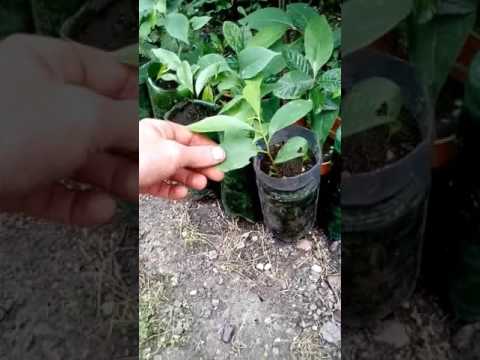

Watch this video on YouTube
Azimine care in the garden
In the first spring weeks, shortly before the growing season begins, the tree is pruned; for this, injured, improperly growing, frozen or diseased shoots are removed, and the crown must be shaped. Flowering begins in April and lasts about 20 days. During intensive growth, the plant must be watered regularly and abundantly, but at the same time it is necessary to prevent stagnation of water in the soil, otherwise rot will appear on the root system. In the autumn, after the dormant period begins, the plant stops watering. When the tree is watered, the surface of the trunk circle must be loosened, if weed appears, it is immediately removed. The water intended for irrigation must be settled, and it must also be heated in the sun.
When grown in open soil, the plant begins to feed only from the second year of life. In the first year after planting, the seedling will use those organic fertilizers that were applied to the soil during the preparation of the soil mixture. At the beginning of the second year of life in the spring, or rather, in April, a solution of complex mineral fertilizer with a high content of nitrogen and phosphorus must be added to the trunk circle. For feeding, if desired, you can use organic matter; for this, manure or pond manure is well suited.
To increase the yield of such a crop, you can use the method of artificial pollination between genetically heterogeneous varieties of pawpaw. To do this, you need to grow at least 2 plants in the garden, using a brush, pollen from the flowers of one copy must be carefully transferred to the flowers of the second. As a rule, as a result of such cross-pollination, the yield of pawpaw increases by no less than 2 times. Since flies are natural pollinators of such a culture, then during the flowering period, pieces of rotten meat must be hung on tree branches at different heights.
Such a culture is frost-resistant and can withstand a drop in air temperature to minus 29 degrees. In this regard, the azimina does not need special preparation for wintering. In the middle of spring, flower buds form, the surface of which is protected by a dense shell, so they are not afraid of frost.


Watch this video on YouTube
Reproduction of pawns
Such a culture can be propagated by the seed method, and also vegetatively - by root shoots, parts of the rhizome and grafting.
Growing from seeds
Before sowing, the seed must be stratified, for this it is kept for 3-4 months at a temperature of 0 to 4 degrees. Then it is sown 1 or 2 seeds at a time, while they are buried in the substrate by 20-30 mm. For planting, peat pots are used, which are filled with seedlings. It is not worth sowing seeds in a common container, since the plants have an extremely sensitive root system, and therefore they can suffer from a pick or transplant. Seedlings need warmth (18 to 22 degrees).
The seeds can also be sown in open soil. In this case, they use podzimny sowing and produce it in October, the seeds will undergo natural stratification over the winter. When sowing seeds in pots, the first shoots may appear in about seven weeks, and seeds sown in open soil will germinate only with the onset of the next spring period. At the end of the first growing season, the seedlings will reach a height of 10-15 centimeters. Such a tree grown from seed will give its first fruits only after 5 or 6 years.
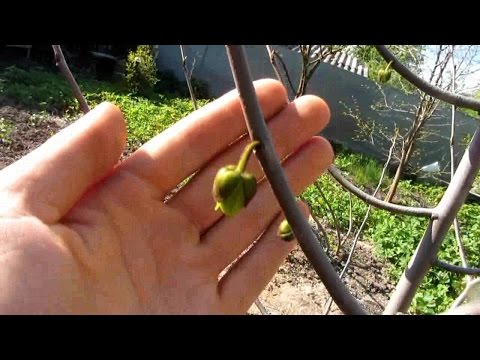

Watch this video on YouTube
Propagation by parts of the rhizome and root shoots
Azimine can be propagated by part of the rhizome, which is broken off from the foot of the plant. It is planted in a planting hole and covered with fertile soil mixture. The first shoots may appear after just over 4 weeks. If necessary, jigging of root shoots, if any, is carried out in the same way.
Graft
Azimina is also propagated by grafting in the "split" method, while lignified cuttings are used as a scion. The splitting of the stock is carried out to a depth of 10 to 15 mm, while a pointed cut of the scion must be placed in the slot, make sure that the cambial layers of both parts coincide. To protect the vaccination site from moisture, it must be wrapped in foil. When choosing a propagation method, it should be borne in mind that only when grafting is it possible to preserve the varietal characteristics of the culture.
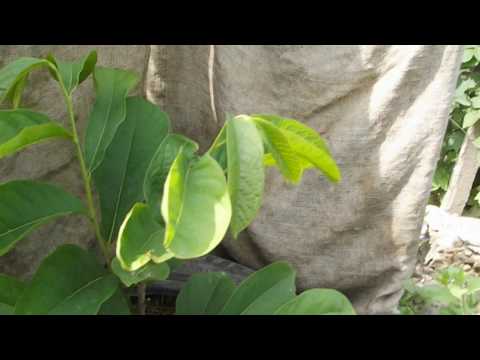

Watch this video on YouTube
Pests and diseases of the pawns
Azimina is resistant to harmful insects and diseases. However, if there is stagnation of water in the soil, then the plant will be damaged by root rot, because of this, it will begin to grow and develop more slowly, and the foliage will turn brown. In this regard, it is extremely important to water such a crop correctly. It is very rare that such a tree is damaged by pests and bacterial, as well as viral infections.
Pawpaw collection and storage
In the last summer or the first autumn weeks, the growth of fruits stops, and their ripening begins. After ripening, the fruits become soft, they acquire a pungent smell and change their color from green to yellow. If you store the harvested fruits for some time, then they must be harvested 7 days before they fully ripen, and this must be done before they fall off on their own. Such fruits are of poor keeping quality, so they cannot be stored for a long time. For example, in the refrigerator on a vegetable shelf, they can remain fresh for 20 days, and when stored in room conditions, they disappear after 3-4 days. In this regard, experienced gardeners recommend processing them (you can cook compote or jam) or freeze them.Also, these fruits do not tolerate transportation well, in this regard, only immature azimine is used for this purpose, and it must be protected from mechanical damage. If each fruit is wrapped in a paper sheet, then its shelf life will become longer.
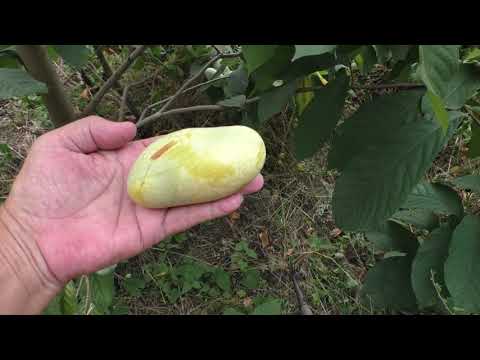

Watch this video on YouTube
Types and varieties of azimines
In total, there are 8 species of pawns in nature, including 1 natural hybrid. Of all of them, only 1 species is cultivated by gardeners - three-bladed azimine, or triloba. However, as a result of many years of breeding work, about 70 cultivars of such a tree were born. The most popular among gardeners are cultivars such as:
- Davies... Fragrant, high-quality fruits have a sweet yellow flesh.
- Martin... The variety is frost resistant. The fruits are of high quality.
- Overlease... The fruits of this variety are similar in quality to those of the Deyviz variety.
- Victoria... The fruits weigh about 380 grams. Their yellow flesh is fragrant and sweet.
Among gardeners, varieties such as: Autumn Surprise, Dessertnaya, Strickler, Sunflower, Prima, Balda, Zimmerman, Potomac, Taylor, etc. are in demand.
Properties of pawpaw: harm and benefit
Useful properties of pawpaw
The fruits of pazimines, also called Mexican bananas, contain vitamins A and C, they are distinguished by rejuvenating and antioxidant effects. In this regard, the pulp of the fruit can both be eaten and used to prepare masks for the skin of the face. The fruit also contains mineral salts of calcium, magnesium, iron, phosphorus and potassium, amino acids, sugars, fats, pectin and fiber.
Such fruits have a unique anti-tumor and antimicrobial effect. So, they contain acetogenin, which helps prevent the development of certain types of cancer cells, and also thanks to it, the growth of already formed cancers stops. Pazimine extract helps to strengthen the body's defenses, protect body cells from free radicals and the negative impact of stressful situations.
Contraindications
Azimina is contraindicated for those who have an individual intolerance to the product. There are such fruits, experts do not advise, during pregnancy and during breastfeeding. To date, no other contraindications have been found.
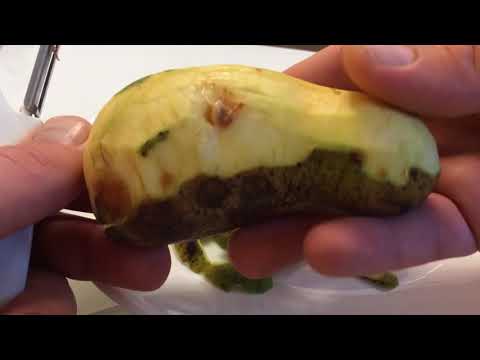

Watch this video on YouTube

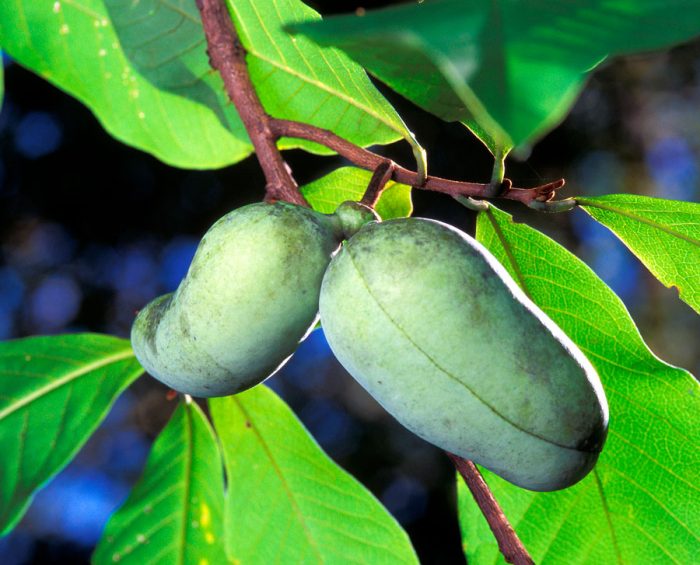
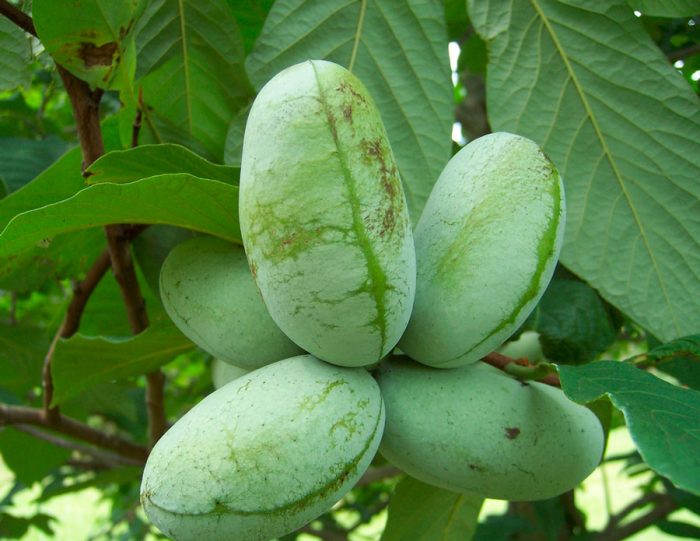
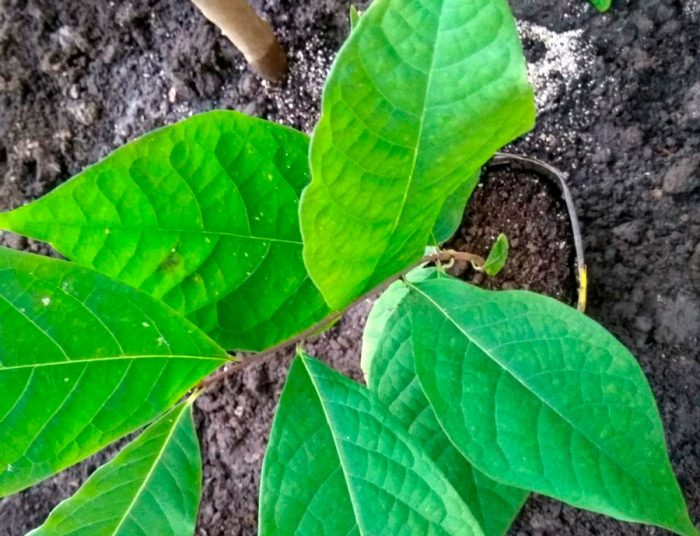
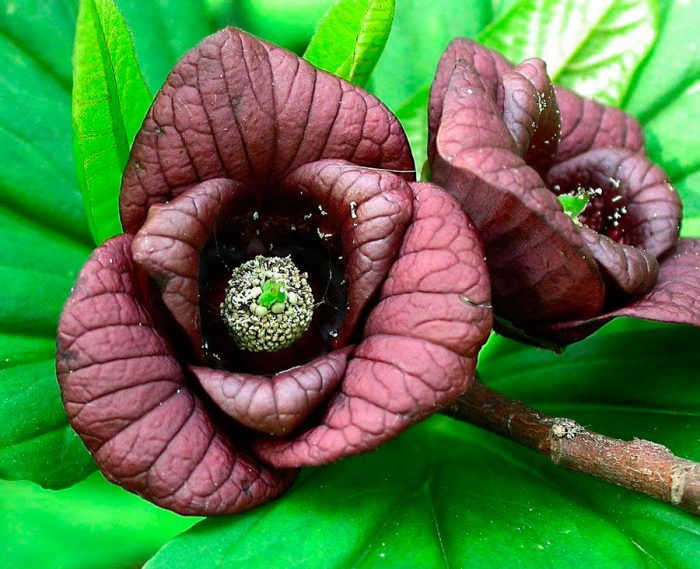
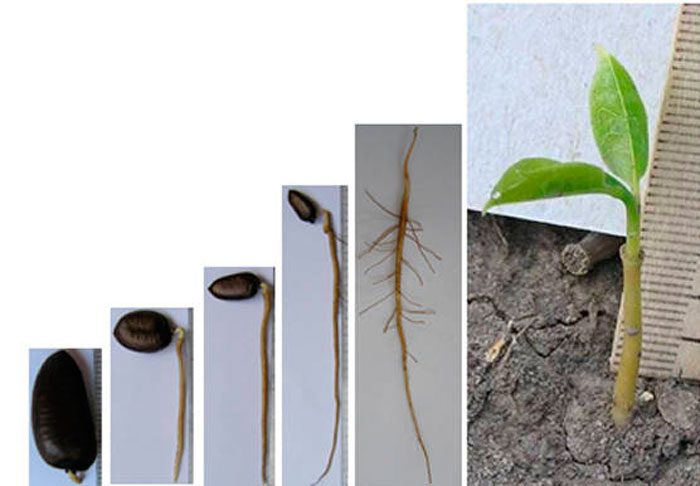
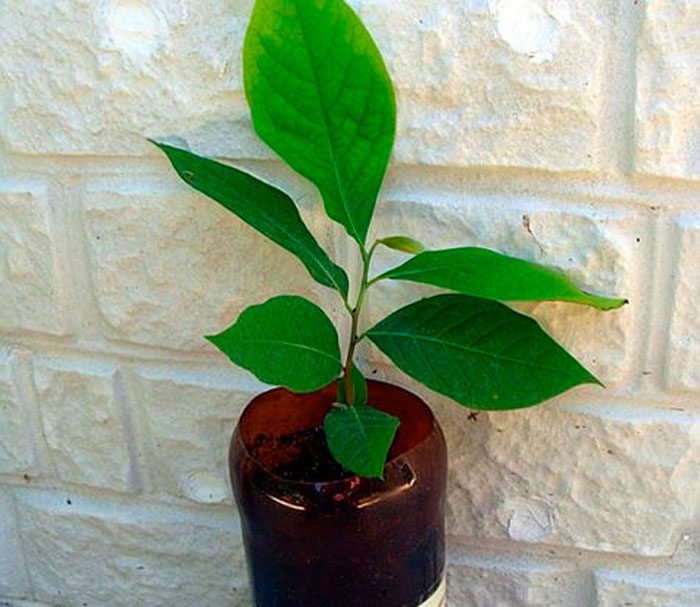
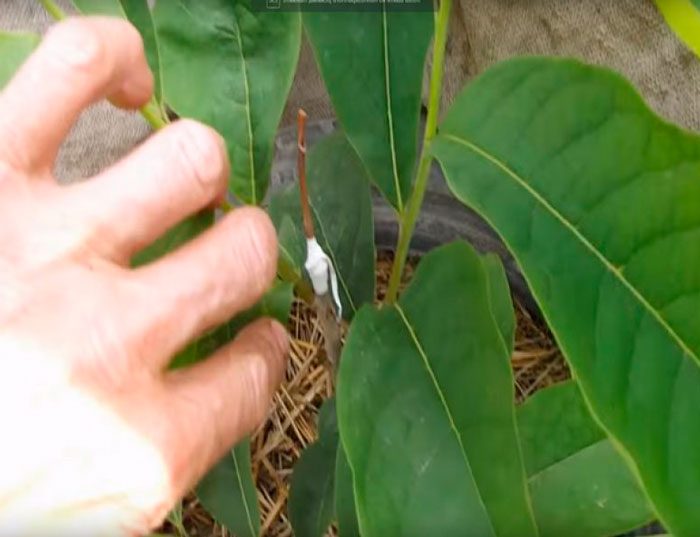
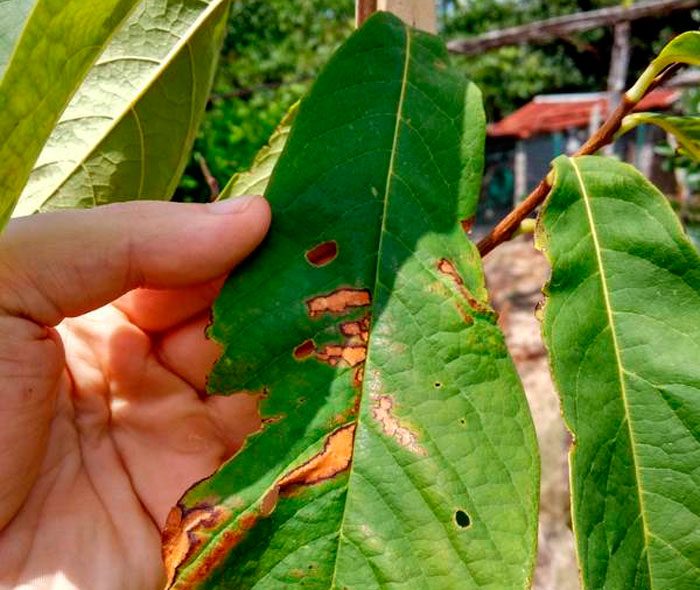
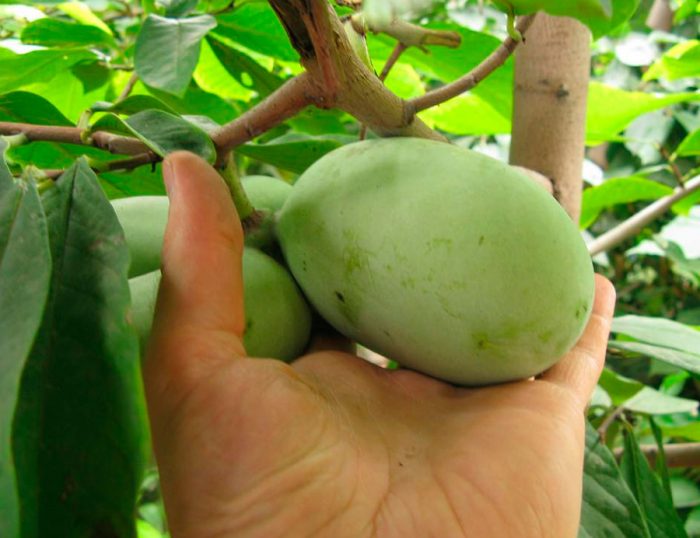
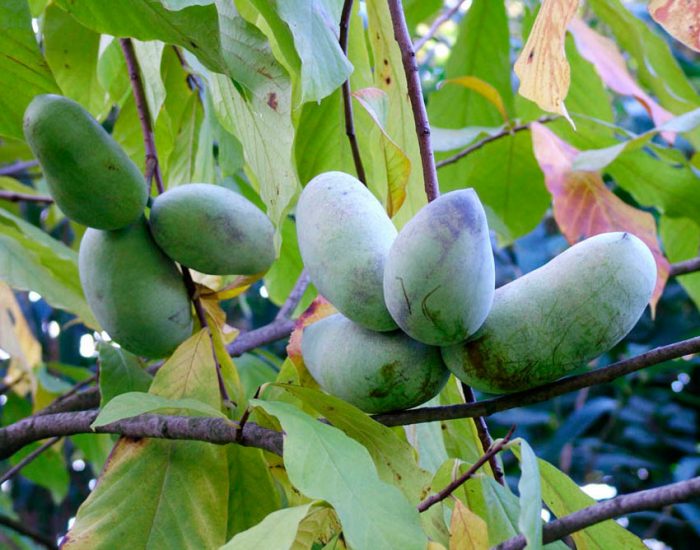
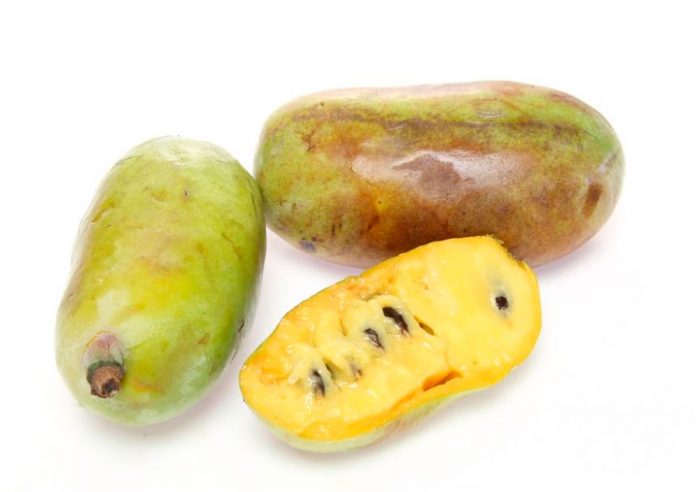

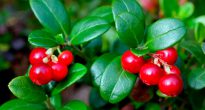






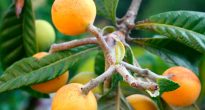

Thank you, I think the fruits are useful and need to be cultivated in Ukraine. I ask you to inform how to purchase AZIMINA seedlings, preferably the VICTORIA variety